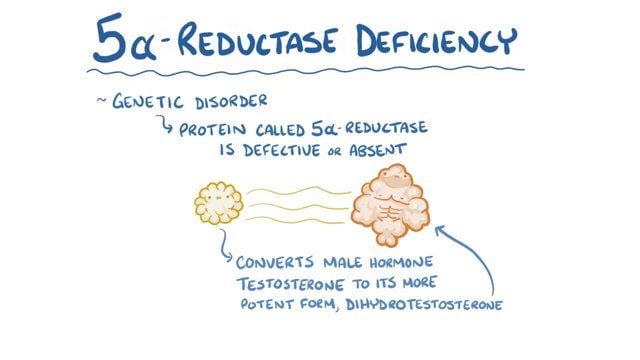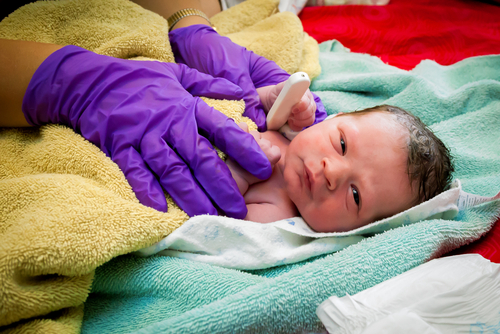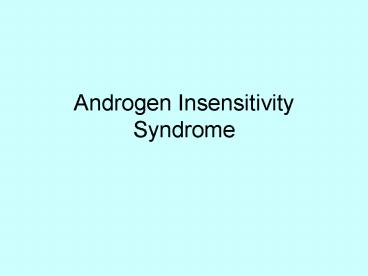Fragile X Syndrome and Fertility: Breaking Barriers to Parenthood
Table of contents
- What is Fragile X Syndrome?
- What are some features of individuals with this condition?
- What is the Cause of Fragile X Syndrome?
- What are the Symptoms of Fragile X Syndrome?
- What are the Health Complications for People with FXS?
- How is the Syndrome Diagnosed?
- Is There a Treatment for the Syndrome?
- Fragile X Syndrome and Fertility
- Is There a Way of Prevention?
What is Fragile X Syndrome?
Fragile X syndrome (FXS) is a genetic disorder and an inherited disorder as well. It causes intellectual, learning, physical, and developmental disabilities. It can also be called Martin-Bell syndrome. The syndrome is called fragile X because when looked at through a microscope, a part of the X chromosome looks fragile or broken. It is the most common form of inherited intellectual and developmental disability. Males are more severely affected by this syndrome than females. Most males who are affected by this syndrome have delayed development of speech and language by the age of two. They also have mild to moderate intellectual disability. Only a third of affected females are intellectually disabled.

The children affected by this syndrome may also have anxiety and hyperactive behavior like fidgeting or impulsive actions. About one-third of individuals affected by this syndrome have features of autism spectrum disorder that affect communication and social interaction. Seizures occur in about 15 percent of males with Fragile X syndrome, while only about 5% of females with the syndrome experience these seizures.
What are some features of individuals with this condition?
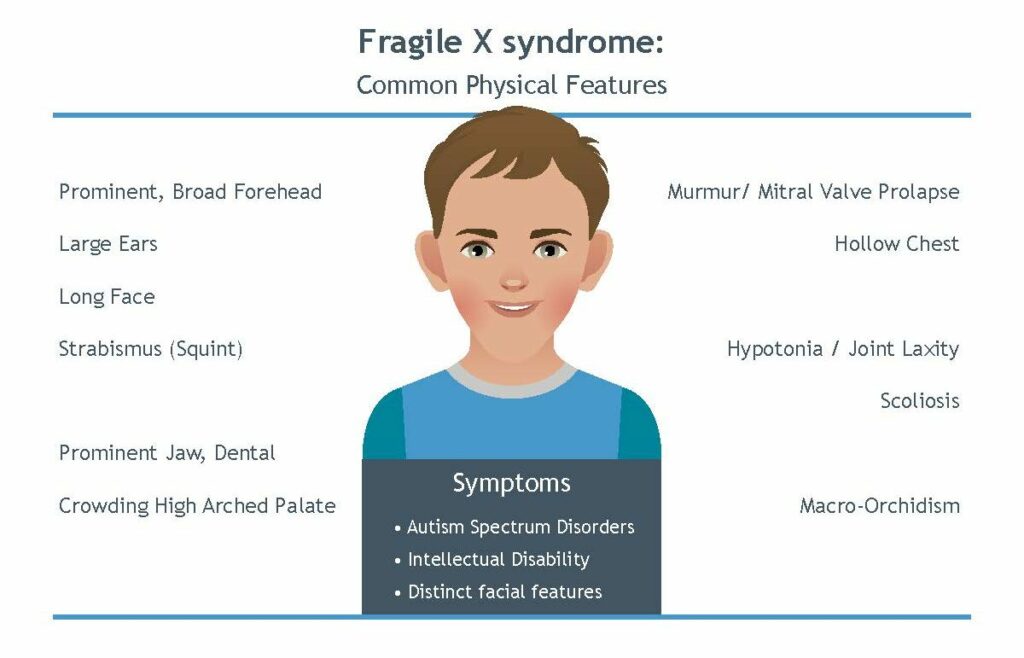
Most of the males and about half the females with this syndrome develop characteristic facial features that become apparent as the individual ages. These features are a long and narrow face, large ears, unusually flexible fingers, a prominent jaw and forehead, large ears, and flat feet. The males also exhibit enlarged testicles after puberty. Fragile X syndrome is one of the three syndromes in the Fragile X family. The other two include;
- Fragile X-associated tremor/ataxia syndrome (FXTAS) – The symptoms of this syndrome include balance problems, shaky hands, numbness in the extremities, unstable mood, cognitive problems, and memory loss.
- Fragile X-associated primary ovarian insufficiency (FXPOI) – The symptoms are reduced fertility, infertility, missing or irregular menstrual periods, and premature menopause.
Fragile X syndrome occurs in about 1 in 4000 males and 1 in 8000 females.
What is the Cause of Fragile X Syndrome?
FXS is caused by a defect in the FMR1 gene that is located in the X chromosome. This defect or mutation prevents the gene from properly making a protein called the fragile X mental retardation 1 protein. This protein is crucial in the functioning of the nervous system, although its exact function is largely not understood. The lack or shortage of this protein is what causes the FXS.
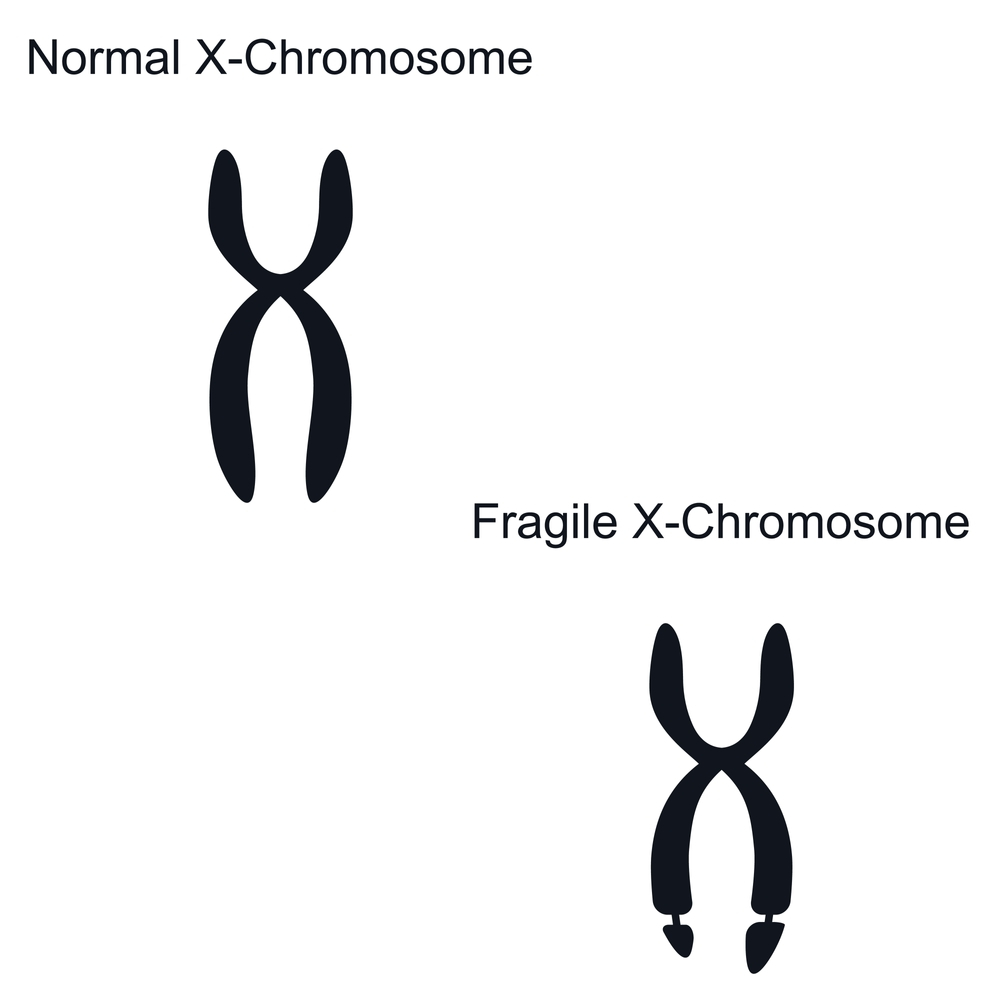
What are the Symptoms of Fragile X Syndrome?
The syndrome can cause learning disabilities, developmental delays, etc. Individuals with FXS may show a combination of the following symptoms:
- Stuttering
- Autism
- Impulsiveness
- Attention difficulties
- Depression
- Difficulty sleeping
- Social awkwardness and anxiety
- Developmental delays
- Hyperactivity
What are the Health Complications for People with FXS?
Females who are carriers are at an increased risk for premature menopause; this is when the menopause stage starts before the age of 40. Men who are carriers are at an increased risk of fragile X tremor ataxia syndrome which causes tremors that increases in severity. They are also at an increased risk of dementia. It can also cause some difficulty in balance and walking.
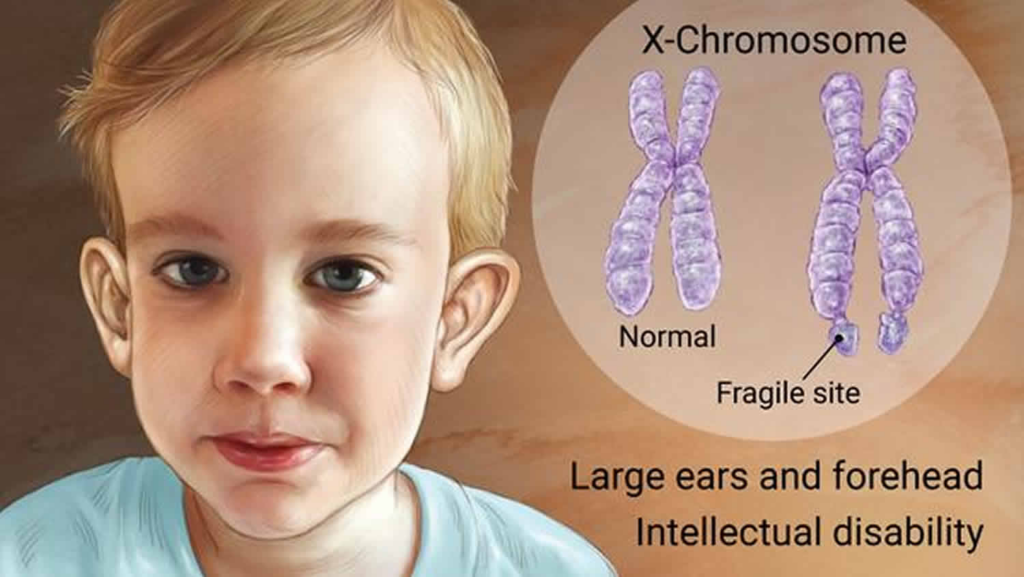
How is the Syndrome Diagnosed?
Children who exhibit any of the above-listed signs of FXS may be tested for the syndrome. The child may also be tested where there is a family history of FXS. The average age of diagnosis for males and females is 35 and 41 months, respectively. The syndrome can be diagnosed using a DNA blood test called the FMR1 DNA test. The test investigates changes in the FMR1 gene that are associated with FXS. Additional tests may be ordered by the doctor to determine the severity of the condition.
Is There a Treatment for the Syndrome?
FXS cannot be cured. The therapy is targeted at helping individuals with the condition learn key language and social skills. This may be done by getting special tutors or getting extra help from their teachers, coaches, family, therapists, and doctors. There may also be established resources or other services in the individual’s country that can help in the learning of essential skills by the affected children. Medication that can be used for attention deficit disorder and anxiety may be prescribed to help manage some of the symptoms of FXS. These medications are:
- Methylphenidate
- Clonidine
- Guanfacine
Fragile X Syndrome and Fertility
Approximately 20% of females with FXS carriers develop premature ovarian insufficiency which can also be called premature menopause. About a third of females with FXPOI will experience the final cessation of menses on or before the age of 29 years while about 1% will have it at 18. It is recommended that the female carriers of this syndrome are alerted to the risks of developing FXPOI and presented with fertility preservation options. These would include the early harvesting and freezing of eggs, their fertilization and freezing of the resultant embryos, or even ovarian tissue preservation. Surrogacy should also be discussed with them. It is also recommended that women with the syndrome receive genetic counseling to discuss the availability of the option of preimplantation genetic diagnosis or prenatal testing during pregnancy.
Estrogen replacement therapy is recommended for women with primary ovarian insufficiency. Hormone therapy in girls and young women using estrogen and progestins replaces what the ovary is supposed to produce at that stage. The hormone therapy will also help in the development of secondary sexual characteristics in those who have failed to naturally develop these characteristics. The males with FXS rarely reproduce due to cognitive and behavioral problems. They also have low sperm count and malformation of the sperm cell.
Is There a Way of Prevention?
There are no particular methods that can be used to prevent FXS since it is a genetic condition. Individuals with Fragile X syndrome in their family history are advised to seek genetic counseling. This is for them to assess the chances of having children who may be affected, and to know the severity of the impairments in the affected children. Individuals in countries that do not have advanced genetic testing capabilities can benefit from medical tourism. This can be achieved through overseas medical treatment, which is offered by medical travel agencies or meditour agencies for a fee. This can be considered as a form of health tourism.
The information provided in this blog is for educational purposes only and should not be considered as medical advice. It is not intended to replace professional medical consultation, diagnosis, or treatment. Always consult with a qualified healthcare provider before making any decisions regarding your health. Read more

